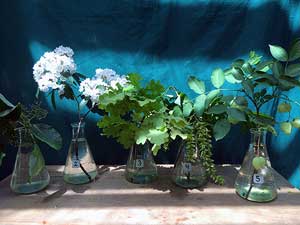June Color Appears at the Washington Park Arboretum

1) Cornus controversa Giant Dogwood
- A rounded deciduous tree bearing spreading, tiered branches and alternate, elliptic leaves, C. controversa can potentially reach 40 feet in height. White flowers are borne in large, flattened cymes in early summer. Following the flowers, masses of deep red fruit develop, changing to blue-black.
- Native to China, the Himalayas and Japan, C. controversa is less cold tolerant than our native dogwoods. This specimen is located along Azalea Way near the Hybrid Bed.
2) Kalmia latifolila Mountain Laurel
- A dense, bushy shrub with glossy, dark green leaves and large corymbs of cup-shaped flowers, Kalmia latifolia is native to North America. Thought by many to be our country’s most beautiful flowering shrub, it is the state flower of both Connecticut and Pennsylvania.
- This specimen is located along the lower trail, near Rhododendron Glen.
3) Quercus robur ‘Concordia’ Golden English Oak
- A standout specimen amongst the late spring flush of green, Q. robur ‘Concordia’ offers us bright yellow young foliage which will eventually turn color in the fall.
- It is located on the east side of Azalea Way near the Woodland Garden.
4) Pterocarya stenoptera Chinese Wingnut
- A large spreading tree with long pinnate leaves and winged green fruit produced in pendent spikes up to 12 inches in length. Wingnuts are a member of the plant family Juglandaceae.
- This specimen is located at the south end of the nut flats, just west of Azalea Way.
5) Staphylea pinnata Bladdernut
- A deciduous shrub up to 15 feet high, S. pinnata is known for its curious bladder-like fruits in late spring and early summer. This specimen is located amongst the True Ashes, west of Azalea Way.